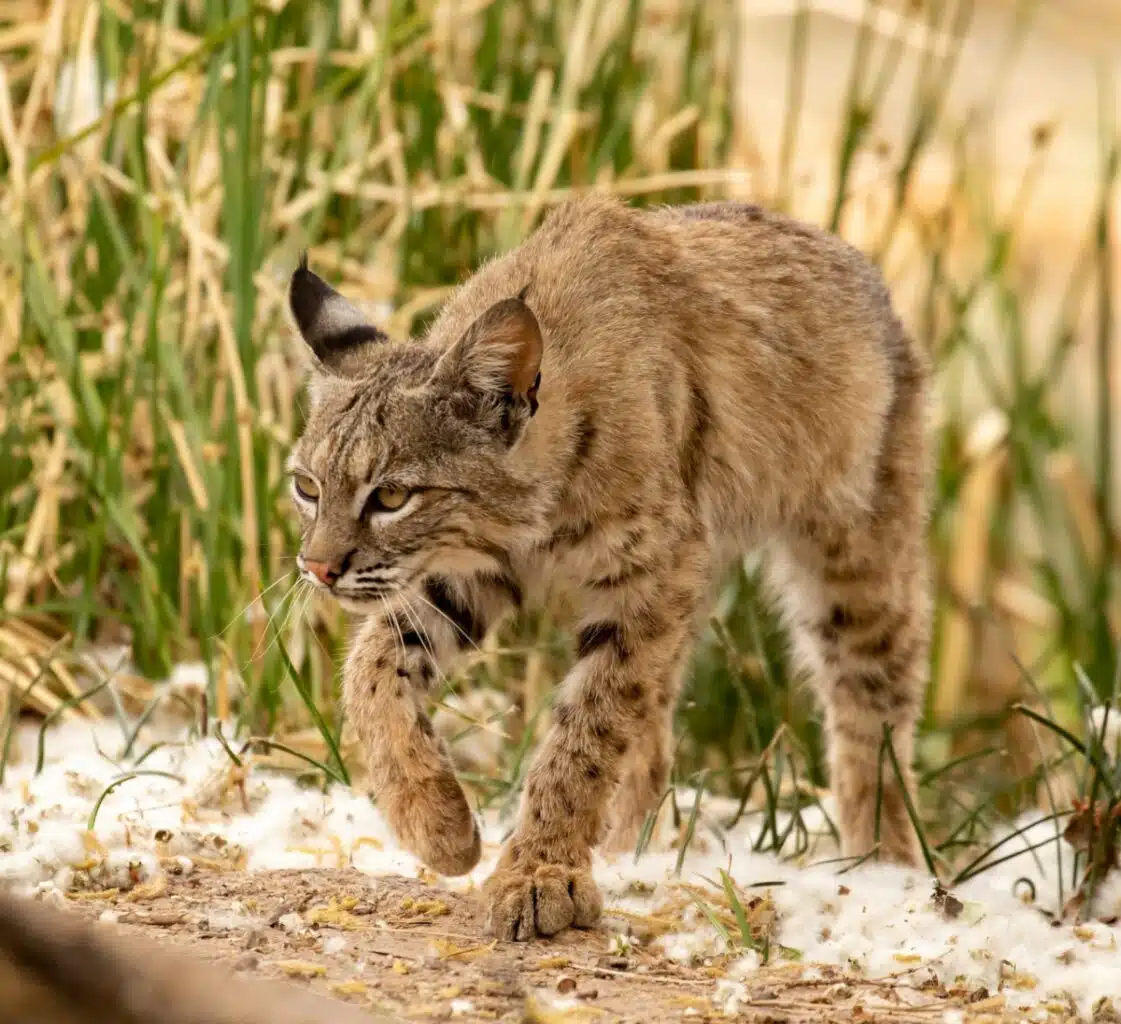Have you ever seen an animal stand its ground against a much larger predator before? It doesn’t happen very often, but animals occasionally fight back. Recently, some incredible photos were taken of a fascinating battle between a porcupine and a bobcat!
So, what happened in nature’s strangest battle between animals of different sizes? The drama unfolds as the hungry bobcat faces off against the prickly porcupine and sees who emerges victorious. Be sure to read on to discover how the outcome may surprise you!
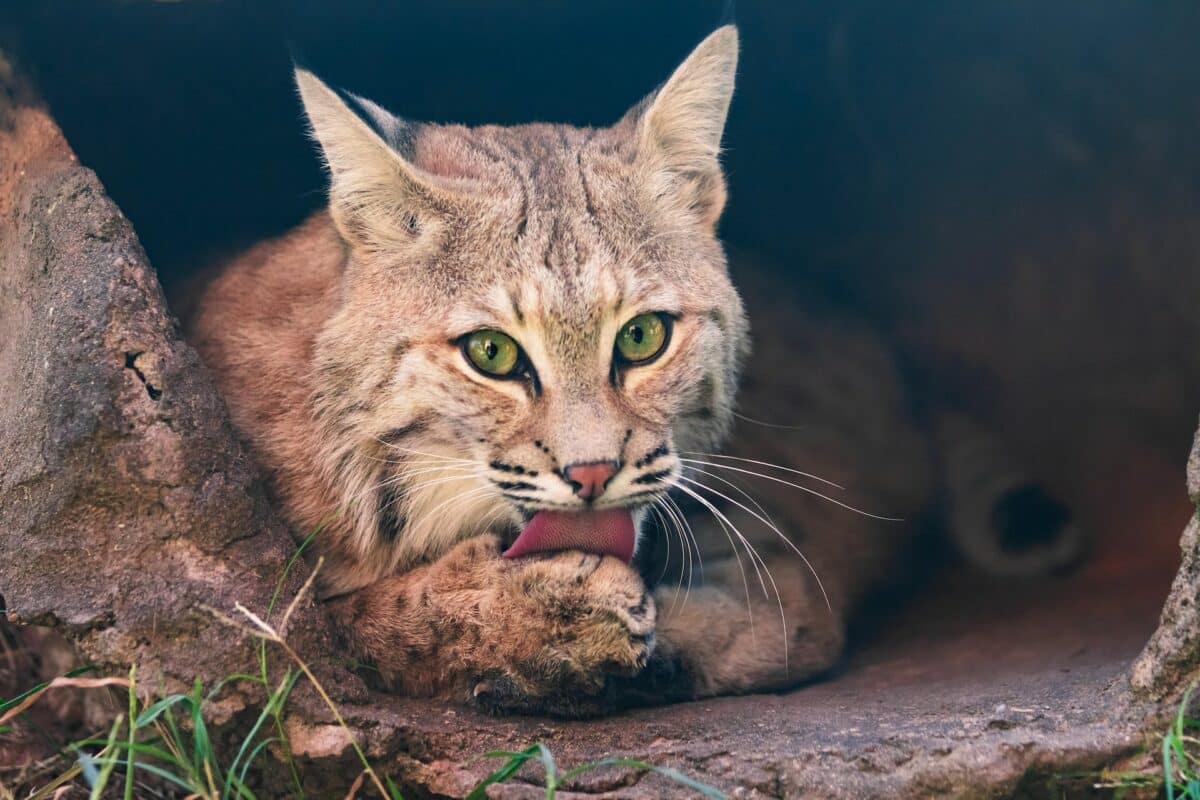
Want to jump ahead? Click below
Comparison Table
| Porcupine | Bobcat | |
|---|---|---|
| Size | Generally smaller than a bobcat | Larger than a porcupine |
| Defense | Sharp and barbed quills as a primary defense mechanism | Speed, agility, sharp claws, and powerful jaws |
| Hunting | Passive defense; relies on quills and tail swatting | Active predator; stalks and pounces on prey |
| Nocturnality | Generally nocturnal | Primarily nocturnal |
| Solitary | Solitary animal | Solitary animal |
| Prey | Herbivorous; eats leaves, bark, and plants | Carnivorous, primarily small mammals and birds |
| Threat | Rarely attacked successfully due to effective defense mechanism | Highly skilled predator with successful hunting techniques |
| Outcome | Porcupine emerged victorious, bobcat retreated | Porcupine successfully defended against the bobcat |
Porcupine’s Defense Mechanism
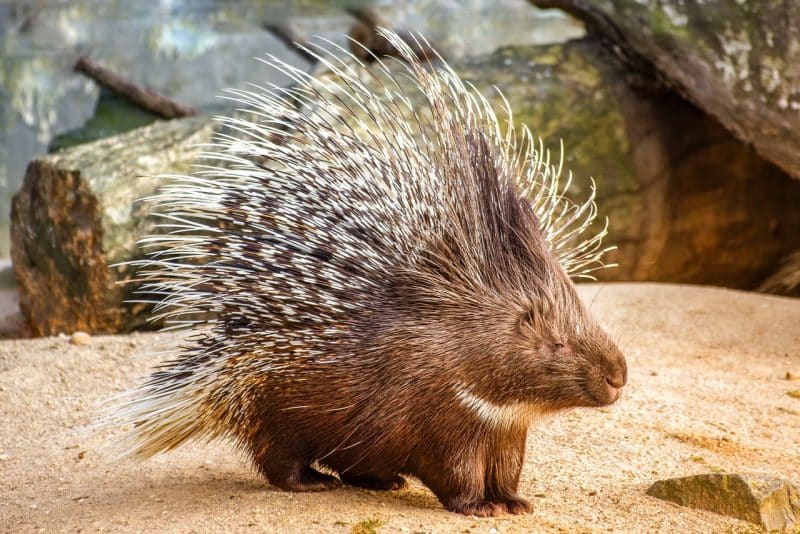
When defending itself against predators, it has a unique and highly effective defense mechanism in its quills. These quills are modified hair that covers the porcupine’s body and are designed to be extremely sharp and rigid.
- Porcupine’s Quills And How They Work
The quills of a porcupine consist of a central core surrounded by layers of keratin, the same material found in our nails and hair. With barbed tips, these quills can penetrate the predator’s skin, causing considerable pain and harm.
In moments of danger, the porcupine instinctively raises its quills and positions itself with its back facing the predator, showcasing its formidable defensive strategy. This impressive display is often sufficient to discourage potential attackers, given that a porcupine can possess over 30,000 quills, covering approximately 30% of its body.
- How The Porcupine Uses Its Quills
In addition to its impressive display, it can swat its tail at a predator to inflict more damage. The tail can have over 50 quills, easily penetrating a predator’s skin.
Interestingly, porcupines can release a strong, unpleasant odor when threatened. This pungent odor deters predators from approaching and could potentially alert other porcupines in the area to the surrounding danger.
- The Effectiveness Of The Porcupine’s Defense Mechanism
The porcupine’s defense mechanism is highly effective, and it is rare for predators to attack them successfully. Even large predators like wolves, lions, and tigers will avoid attacking porcupines, as the risk of injury is too high.
Bobcat’s Hunting Techniques
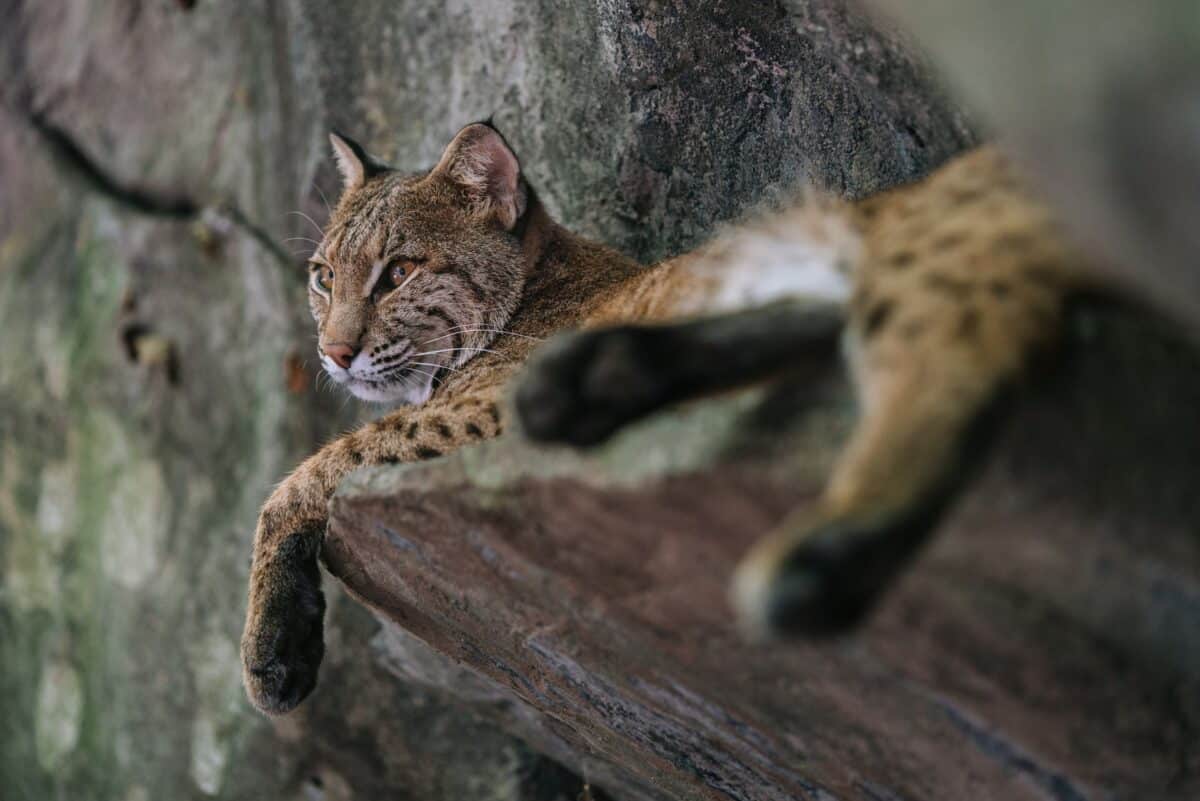
Bobcats are known for their excellent hunting skills and are considered one of the most successful predators in the wild. They have a keen sense of sight and hearing, which they use to track and hunt their prey. Here’s a closer look at how bobcats hunt:
How The Bobcat Hunts?
Bobcats are primarily nocturnal and solitary hunters. They depend on stealth and patience to track their prey, awaiting the opportune moment to strike and pounce on their unsuspecting victims.
They often use their sense of smell to locate their prey, particularly rabbits, rodents, and birds. Once the bobcat spots its prey, it moves slowly and quietly toward it, taking advantage of any cover or shadows to remain hidden.
How The Bobcat Uses Its Size And Speed To Catch Its Prey
Bobcats have an incredible ability to hunt down prey much larger than themselves, thanks to their speed, agility, and strength. With their skill, porcupines can reach up to 30 miles per hour in short bursts, enabling them to catch swiftly moving prey. Their sharp claws and strong jaws allow them to swiftly and decisively deliver lethal bites, often resulting in quick prey demise.
Importance Of Food For The Bobcat’s Survival
Food is critical for the survival of bobcats. They must consume about one pound of meat daily to maintain their energy levels and stay healthy. Bobcats are opportunistic hunters, meaning they will eat whatever they can catch, including small mammals, such as rabbits and squirrels, and even birds and reptiles. When food is scarce in the winter, they may also scavenge on carrion.
The bobcat’s hunting techniques are a fascinating display of animal prowess. Their stealth, speed, and power make them one of the most formidable predators in the wild. With an insatiable appetite and a need to hunt, they are an integral part of the ecosystem and play a vital role in maintaining a healthy natural balance.
The Battle: Porcupine Vs. Bobcat
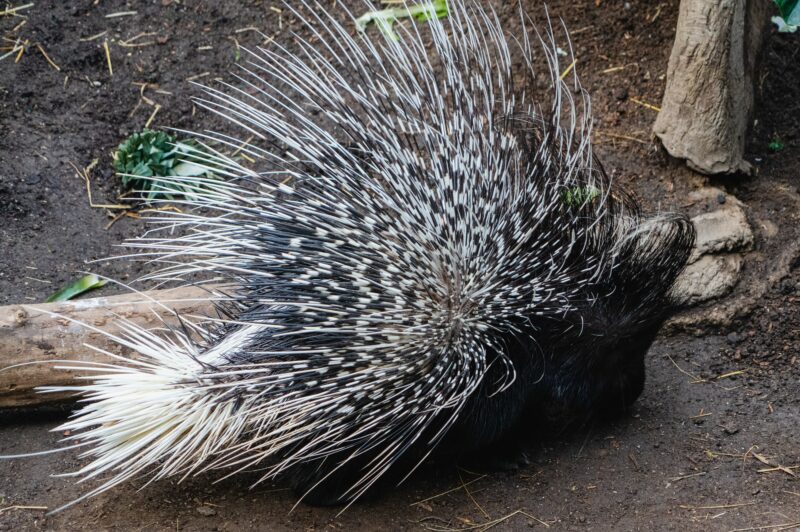
Firstly, the fascinating encounter between a porcupine and a bobcat was a rare event that has been documented through images and videos. Secondly, it occurred in the woodlands of Northern Arizona, where the bobcat’s hunting instincts led him toward the porcupine.
The bobcat stalked the porcupine, intent on the hunt. However, the porcupine was not intimidated by the larger predator and stood its ground, ready to defend itself.
- How The Porcupine Defends Itself Against The Bobcat
The porcupine has a unique way of defending itself against the bigger predator. With sharp quills covering its body, it looked like an easy meal for the bobcat.
However, when the bobcat attacked, the porcupine turned its back to the predator, exposing its quills. Evidently, these quills are around 3.8 centimeters long and can inflict serious pain if they penetrate the skin of an attacker. Furthermore, as the bobcat tried to take down the porcupine, it was wounded by the sharp quills, causing it to back off and retreat.
- Highlight The Surprise
The outcome of the encounter between the porcupine and the bobcat surprised many. While the bobcat is known to be a skilled predator, it was no match for the porcupine’s defense mechanism. Finally, the battle ended with the bobcat retreating and the porcupine emerging victorious.
Additionally, this was an unexpected turn of events, given the difference in size and strength between the two animals. The encounter also showed how animals could use unique defense mechanisms to protect themselves against predators.
Key Points of Porcupine Defends Itself Against Bobcat
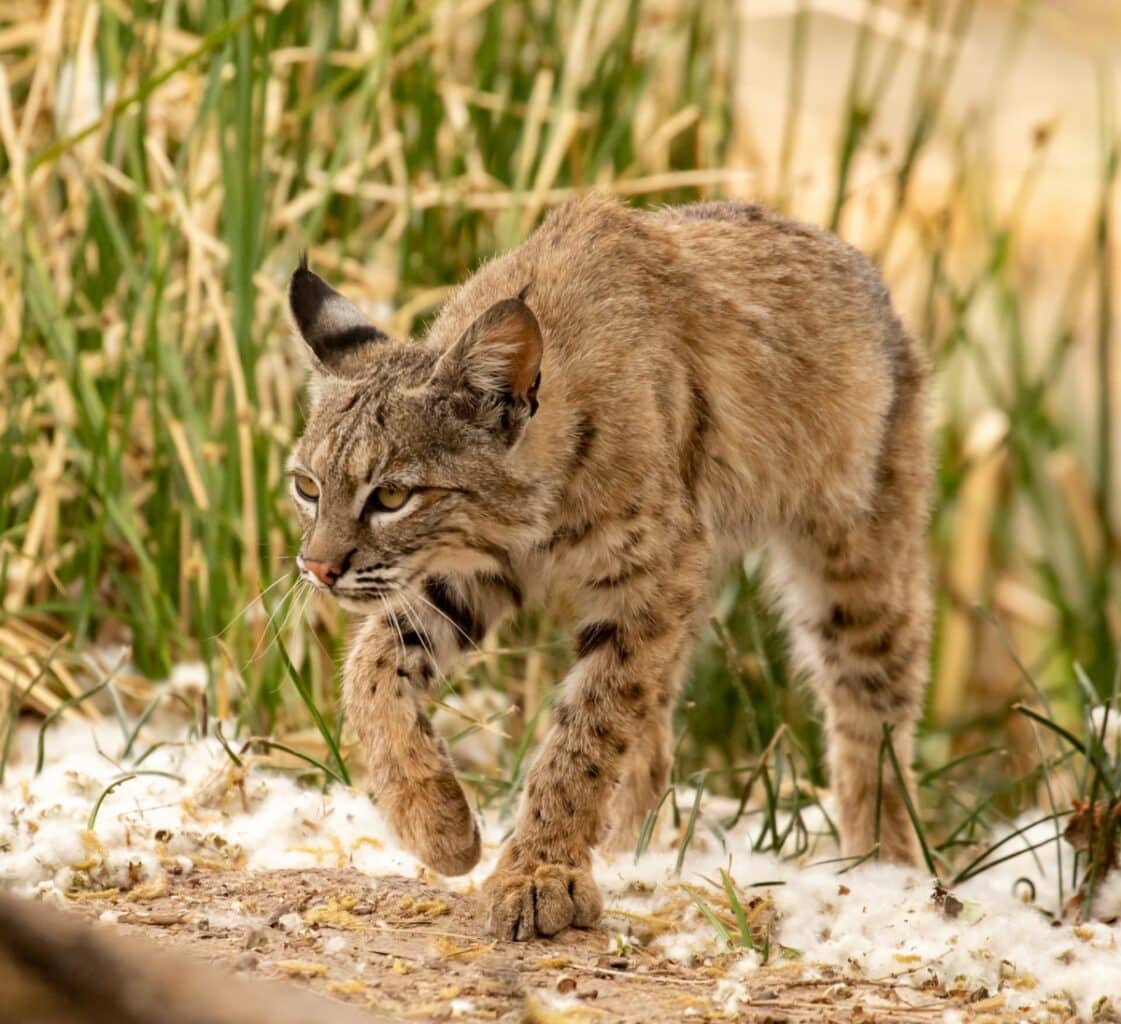
| When defending itself against predators, it has a unique and highly effective defense mechanism in its quills. |
| The quills of a porcupine consist of a central core surrounded by layers of keratin, the same material found in our nails and hair. |
| When the bobcat attacked, the porcupine turned its back to the predator, exposing its quills. These quills are around 3.8 centimeters long and can inflict serious pain if they penetrate the skin of an attacker. |
| With an insatiable appetite and a need to hunt, Bobcats are an integral part of the ecosystem and play a vital role in maintaining a healthy natural balance. |
| Food is critical for the survival of bobcats. They must consume about one pound of meat daily to maintain their energy levels and stay healthy. |
Wrapping Up with Porcupine Defends Against Hungry Bobcat
The battle between a porcupine and a bobcat is a rare and remarkable natural sight. While bobcats are known to be skilled predators, the porcupine’s prickly defense mechanism proves to be an effective weapon. Even in danger, the porcupine stands its ground and fights back, showcasing animals’ incredible resilience and adaptability in the wild.
This fascinating story reminds us of nature’s complex and often surprising dynamics and the importance of respecting and appreciating all creatures, great and small. Don’t miss this unforgettable encounter’s incredible photos and amazing details!
Thanks for following along with me! I hope you enjoyed reading about a topic that intrigues me.
Next up is~
- When The Tables Turn: Watch A Mongoose Take On A Cobra
- The Great Chase: Wild Dog Pursues a Springbok
- Watch Hippo Mother Chases Crocodiles To Protect Her Dead Child - April 15, 2024
- Watch Elephants Ask Rescuer To Play Piano - April 12, 2024
- Top Techniques To Cleaning Up Dog Vomit - April 11, 2024

